The Pakistani passport has been a mirror of the persistent existentialist tussle in the country itself. The evolution of its look and contents have reflected (or, rather, have been made to reflect), what Pakistan as a polity and a nation stands for.
The country came into being in August 1947, mainly through the efforts of a sharp lawyer and Muslim modernist, Muhammad Ali Jinnah. Jinnah explained the new country as a modern Muslim-majority state where ‘Muslim culture’ would dominate the society but the state itself would have nothing to do with matters of faith. According to the founder, religion was an individual’s private matter.
Jinnah passed away just a year after Pakistan’s creation. And ever since his death, the country’s state, various governments, and the moderate, liberal, and conservative intelligentsia have been locked in continuous battle over the question of the country’s raison d’être and ideological composition.
According to moderates and liberals, Jinnah envisioned Pakistan as a project to conceive and initiate an entirely modernistic, flexible and pluralistic strand of Islam, which could then go on to inspire the rest of the Muslim world.
On the other hand, conservative and religious intelligentsia insists that Pakistan was created as a jumping pad to launch a theological state. They maintain that this was to be done through legislation from above and evangelical activity from below, which would then shape a ‘unique’ Islamic state for the Muslim Ummah.
This battle has raged on and it becomes even starker when it is played out in the corridors of the state.
The initiatives have gone to and fro between the liberal/moderate narrative and the conservative one. The evolution and trajectory of this battle can also be traced in the transformation of the Pakistani passport.
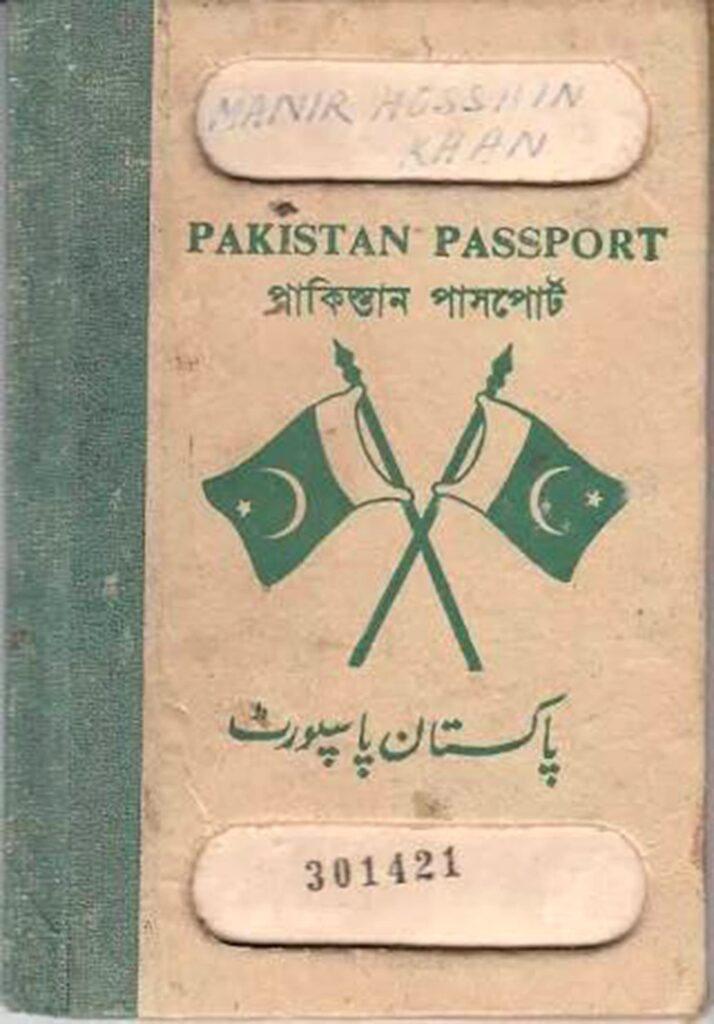
Issued in late 1947, the cover of Pakistan’s first passport is largely beige in colour and only partially green.
It has ‘Pakistan Passport’ written in three languages: English, Bengali, and Urdu.
It has two Pakistan flags, one symbolising the country’s western wing (West Pakistan) and the other its eastern wing (East Pakistan). Inside, there is just the holder’s name, address, profession, photo, and marital status.
Pakistanis did not require pre-arrival visas and could get visas-on-arrival in any country they wished to travel, including India
By 1954, the colour green had ousted the beige. The two flags were still there, but the holder’s name now appeared on the cover.
Due to tensions between the state and the Bengali majority of East Pakistan, the government had introduced the One Unit scheme, which treated the ethnically diverse West Pakistan as a single province and the Bengali-dominated East Pakistan as the other province.
Consequently, West Pakistani passports (like the one in the picture) had ‘Pakistan Passport’ written only in English and Urdu, whereas East Pakistani passports had the same written in English and Bengali.
This was soon changed, but the rest of the contents remained the same: holder’s name, photo, address, profession, and marital status.
Pakistanis could still get on-arrival-visas in most countries, except Israel, the Soviet Union and Afghanistan – countries that Pakistan had developed strained relations with. However, India and Pakistan were still issuing on-arrival-visas to one another despite the fact that both had gone to war in 1948.
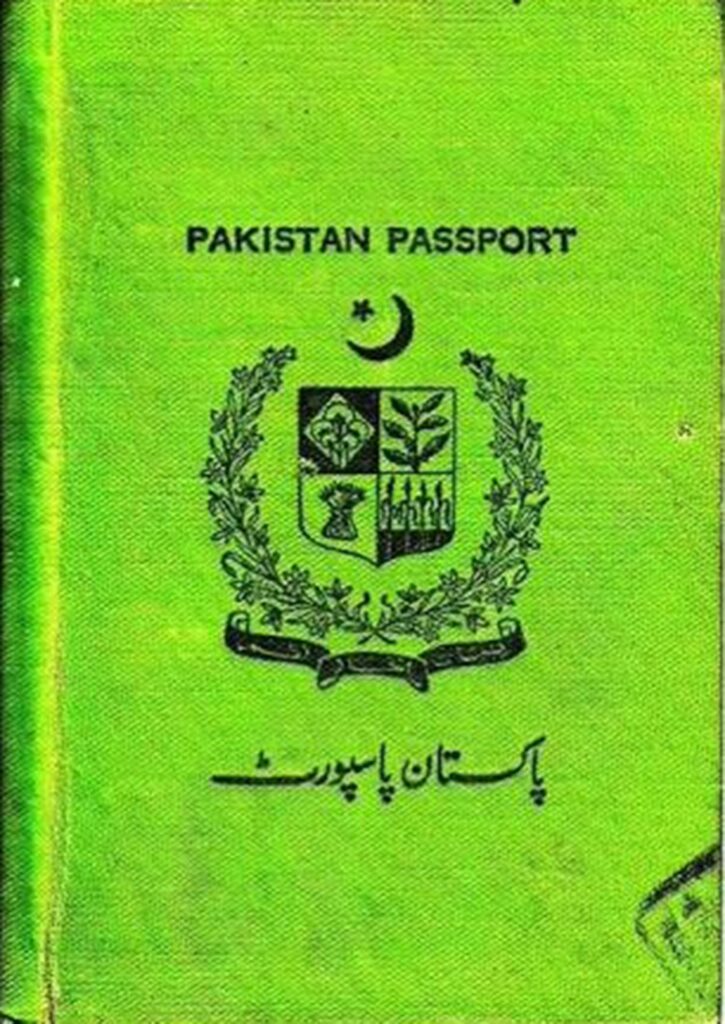
The dark green passport lasted till 1960. In 1956, when the Constituent Assembly authored and passed the country’s first constitution, it declared Pakistan an Islamic Republic.
It was also decided that the term ‘Islamic Republic of Pakistan’ was to appear on Pakistani passports by 1958. However, this never happened because in 1958, the country’s powerful president, Iskander Mirza, and its army chief, Ayub Khan, imposed martial law for the first time in Pakistani history.
Mirza suspended the constitution, terming it “the peddling of Islam for political gains.” Within the first 20 days of the coup, Ayub ousted Mirza as well and became president in 1959. He changed the name of the country to the Republic of Pakistan.
The first passport issued by the Ayub regime was in 1960. It was light green in colour, symbolising the regime’s modernist and moderate view of Islam. It just had ‘Pakistan Passport’ written on it in English and Urdu. The flags were removed and so was the Bengali translation (which had reappeared in the late 1950s). The contents inside remained the same.
Pakistanis could receive on-arrival-visas in all countries, except the Soviet Union, communist countries in eastern Europe, and Israel. Afghanistan had begun to give on-arrival visas.
The only communist country that gave on-arrival visas to Pakistanis was China. India and Pakistan still had on-arrival-visa policies between them.
In 1967, the colour of the passport was changed back to dark green.
The Ayub regime had begun to face harsh criticism from opponents, especially after the 1965 Pakistan-India war had ended in stalemate and the once-booming economy had begun to retract.
Trouble began to brew on the country’s streets and campuses, and Bengali nationalists in East Pakistan became more hostile. The passport turned dark green again and, once more, the words ‘Pakistan Passport’ began appearing in Bengali. The inside contents remained the same.
Pakistanis still enjoyed on-arrival-visa facilities in all the countries, except in communist countries, barring China. However, from 1965 onward, India and Pakistan abolished their long-standing on-arrival-visa policies.
In 1974, the passport became bluish green in colour and the Bengali text disappeared.
This was due to the fact that in December 1971, East Pakistan had broken away to become Bangladesh.
Pakistani passports continued to use Bengali text till the country finally recognised Bangladesh in 1974.
When Zulfikar Ali Bhutto’s left-leaning and populist Pakistan Peoples Party (PPP) came to power in 1973, it authored and passed the country’s third constitution. Even though the new constitution changed the country’s name back to Islamic Republic of Pakistan, the new name did not appear on the passport.
The contents inside changed a bit though. Apart from having the holder’s name, address, profession, and marital status, a section was added to note the colour of the holder’s eyes.
From 1970 onward, the U.S. ended its policy of giving on-arrival-visas to Pakistanis, but the Soviet Union and communist countries began to relax their visa policies towards Pakistan somewhat. Nevertheless, Pakistanis were still able to enjoy on-arrival-visas in most countries.
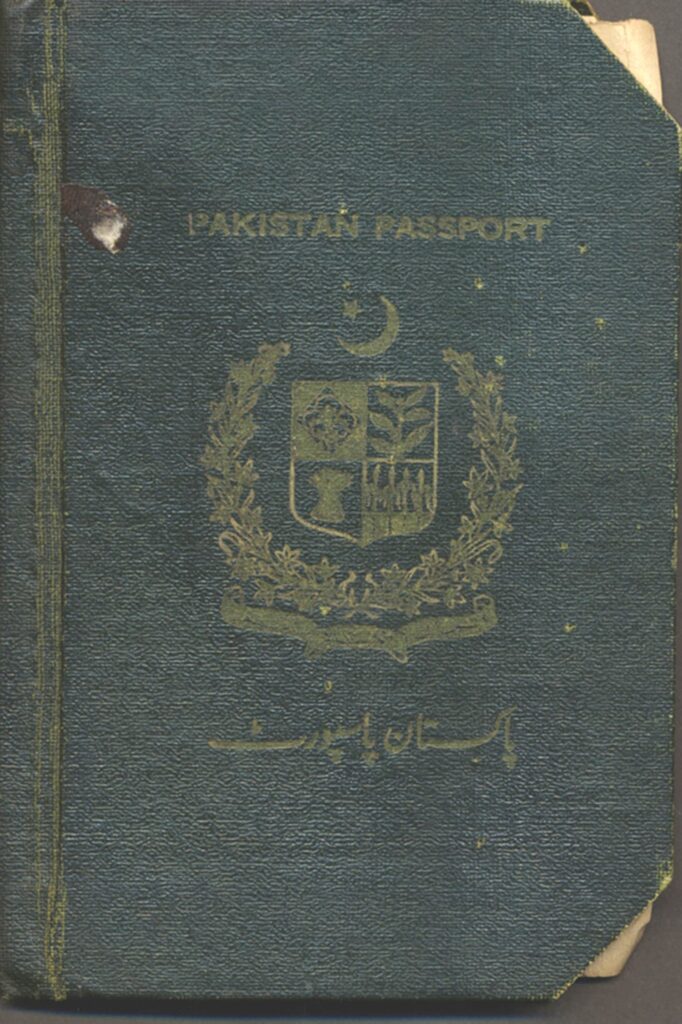
In 1974, the passport also came with the disclaimer that Pakistanis could not use the passport to travel to Israel and South Africa, which was under the apartheid regime at the time.
In 1979, the passport was more or less the same, but the Urdu words ‘Pakistan passport’ were shifted on top and the English ones pushed down.
In July 1977, a reactionary military coup pulled off by General Zia ul Haq had toppled the Bhutto regime, but the name Islamic Republic of Pakistan had yet to appear on the passports. The contents inside remained the same as they were in 1974.
However, the revived on-arrival-visa policies between Pakistan and Afghanistan were abolished again, mainly due to the communist revolution in Afghanistan in 1978 and the Soviet invasion of that country in 1979.
Barring the communist countries (except for China) and the U.S., Pakistanis could still get on-arrival-visas in most countries.
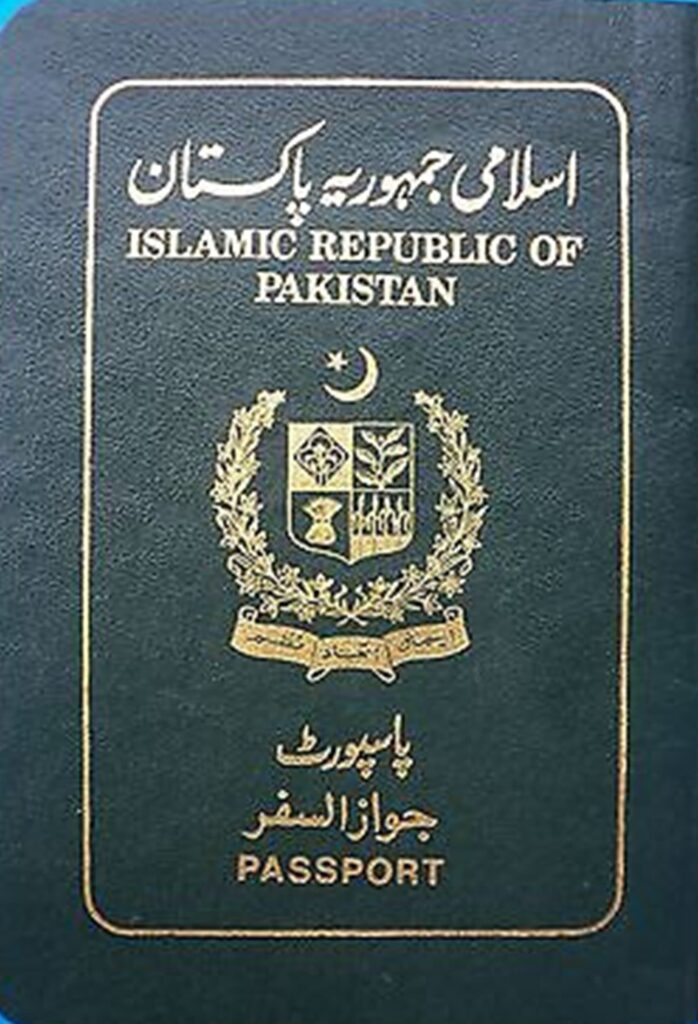
In 1984, major changes were made to the Pakistani passport.
Zia was still at the helm and had accelerated his so-called Islamisation project. The country’s official name, though changed to Islamic Republic of Pakistan in 1973, only appeared on the passports for the first time in 1984.
What’s more, the word ‘Passport’ appeared not only in English and Urdu, but also in Arabic!
There were two reasons for this.
Firstly, more and more Pakistanis were going to oil-rich Gulf countries for work. Secondly, Arab cultural and theological influence had been allowed by the regime to seep inside the country’s institutions.
The contents of the new passport inside now had an additional section in which the holder had to declare their faith. Also, they had to sign a declaration that they were not members of the Ahmadiyya community in order to receive the passport. Though the community had been ousted from the fold of Islam by a National Assembly Bill in 1974, a new ordinance in 1984 introduced further restrictions on the community.
In 1983, UK and other major European countries stopped providing on-arrival-visas to Pakistanis. Pakistanis could also not get Afghan visas (and vice-versa), but the visa policies between India and Pakistan were greatly relaxed.
Pakistanis still could not get visas for the Soviet Union and other communist countries easily, but China continued to provide on-arrival-visas.
Soon, the Gulf states changed their policies as well and Pakistanis were required to have pre-arrival visas for the UAE, Qatar, Oman, Kuwait, and Saudi Arabia. Libya had already stopped providing on-arrival-visas to Pakistanis in 1980.
In the early 1990s, a few years after the end of the Zia dictatorship, the passport changed again.
The green became slightly lighter in colour, and the English words ‘Islamic Republic of Pakistan’ were once again pushed up and the Urdu ones pushed down.
The Arabic text were removed, but the section noting the holder’s faith remained and so did the declaration denouncing the Ahmadiyya community.
This version of the passport has remained as is till this day, even though the Pervez Musharraf regime (1999-2008) attempted to replace the words ‘Islamic Republic of Pakistan’ with the old ‘Republic of Pakistan’. But the attempt failed due to protests by religious parties.
After 9/11, and the rise of religious militancy in Pakistan, more and more countries stopped providing on-arrival-visa facilities to Pakistanis. Pakistanis now require a pre-arrival visa for China as well.
Today, only 29 countries provide on-arrival-visas to Pakistanis, most of whom are in Africa.
According to a 2016 Henley and Partners Visa Restrictions Report, the Pakistani passport’s value has been rapidly diminishing in the last two decades and it is now one of the least valuable passports in the world.
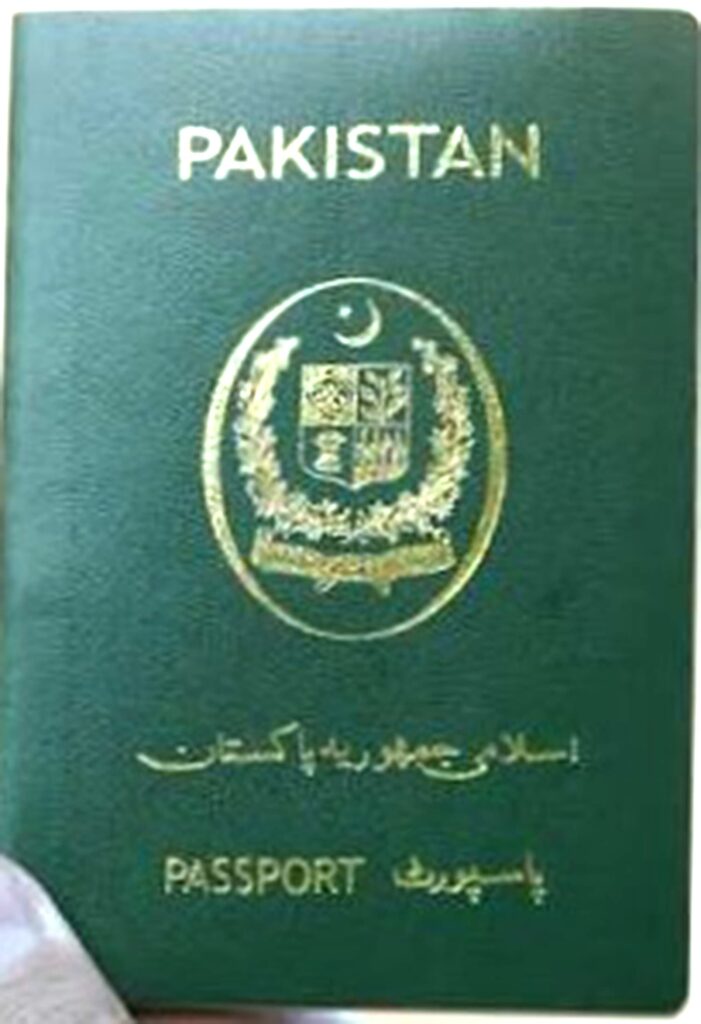
As in 2016, Pakistani embassies in some European countries have begun to provide, to dual-nationals only, Pakistani passports that have ‘Pakistan’ written on them in English and the words ‘Islamic Republic of Pakistan’ in Urdu only. This cover might gradually be adopted for passports held by all Pakistanis in the future.

